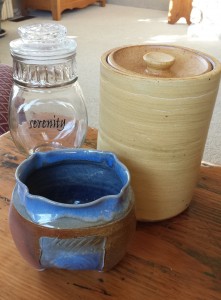The more complex the world seems to get, the more comfort we can find in simple expressions of thankfulness.
To bring appreciation into every day, I asked friends for ideas on how they practice gratitude. Here are five that are definitely worth sharing.
1. Use the alphabet. My friend Thea started this practice on November 1 and will conclude on Thanksgiving Day, which just happens to be on the 26th this year. That makes a handy metric for linking gratitude with the letters of the alphabet. Each day she and her friends post several things on her Facebook page that start with that day’s letter—a little like creating an Advent calendar with a dictionary.
For instance: “Happiness is: hugs, Herpolsheimer’s, Hollandaise, heliotropes, Harvey, houseguests, hummingbirds and Hula dancers. I is for imagination, isosceles triangles, internet (sometimes), intention (always), and the icing on the cake!! Also, intuition, influence, idiosyncratic spellings, international flights, and iodine, when needed!”
2. Put it in a jar. I gave a gratitude jar to my friend Jude when she retired more than a year ago. Immediately, she started filling it up with notes and reminders of kindnesses and blessings. When she and her husband moved last spring, she says, “I read each of them and was overwhelmed.” Unfortunately, the jar broke in the move. But the gratitude lives on.
You can use any jar for this, of course. My favorites are those that have personal significance, like one of my mom’s glass jars (labeled with something I’m always grateful for: serenity), a lidded jar made by a friend, and a piece of pottery from a retreat on Flathead Lake in Montana that evokes memories of the mountains and water.
3. Carry it in your pocket. Dawn keeps a polished stone in her pocket, and any time she remembers it, she thinks of something she’s grateful for. “At a minimum, that’s two times a day,” she says, “putting it in my pocket and taking it out at the end of the day. I had given my mother a stone years ago and found it after she died so I keep hers with me also, feeling grateful that she was my mother.”
4. Sing it. Kate starts her day by chanting the word, “Please.” She’s not asking for anything specific—the word just rings in her head for part of the day. Then, at some point, her internal chant automatically shifts to “thank you.” You can experiment with the tone and rhythm to create your own daily song—a great practice to do with kids.
5. Start and end with it. Cheryl read earlier this year that Wayne Dyer said “thank you” when he woke up in the morning. “I started using it for a daily practice and immediately found it to bring about a sense of groundedness,” she says. On the other end of the spectrum, Rachel thinks of the things she’s grateful for as she falls asleep at night so that gratitude weaves its way into her consciousness. “Once I woke up in the morning saying, ‘Thank you,’” she says.
Kate does something similar. As she goes to sleep at night, she focuses on the word “thank” with each inhale and “you” with each exhale so that every breath is a statement of gratitude.
If five practices aren’t enough, here’s a bonus that may be the most important:
Express gratitude even in challenging times. Dani’s son was just diagnosed with diabetes and liver problems, and two of her close friends are going through chemo. But she chooses to focus on things she’s grateful for. “Thank you, Lord, for my health!” she says. This reminds me of a quote from a favorite writer:
“… the most important thing is to embrace the present, to love our lives today—even if there are physical and intellectual challenges—and to understand that we have the power to imbue everything that we do, every relationship we have, and every day that we live with meaning,”
—James Autry, Choosing Gratitude
What’s your gratitude practice? I hope you’ll share it in Comments.













